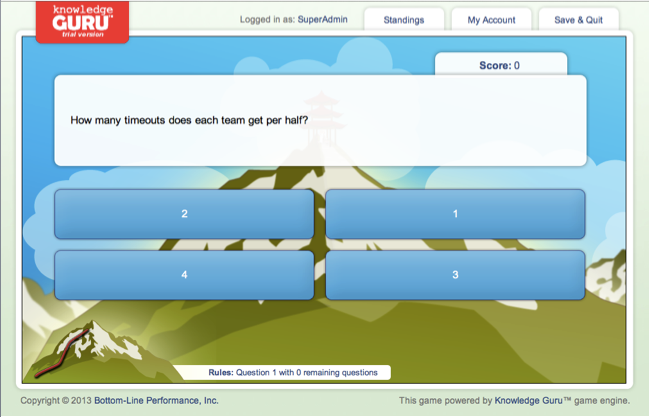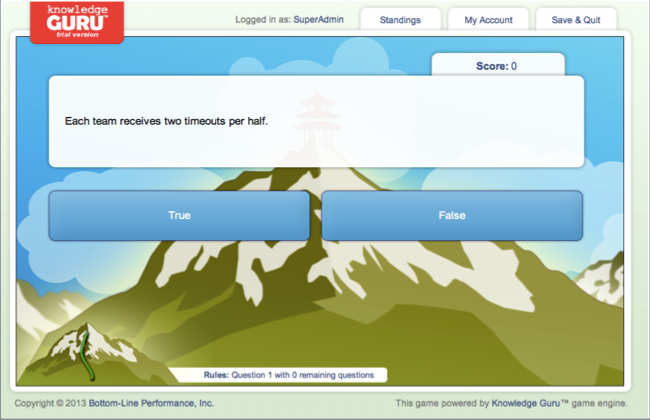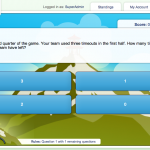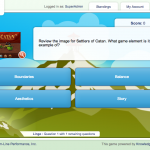How to Write Distractors for Knowledge Guru Questions
Every question in Knowledge Guru is multiple choice, with between two and four possible answers. The key to creating a challenging game that actually helps people learn is as much about the incorrect answers as the correct ones.
If your incorrect answer choices are too obvious, players will be able to guess the correct answer without really learning or knowing the content. The tips below will help you craft the incorrect answer choices in your game. We call these choices “distractors.”
Do give reasonable “distractors” or possible responses.
Avoid the use of “all of the above” or “none of the above.” These response choices are big cues to learners of what the correct response is. The vast majority of times these response options are present, they are the correct answer.
Make your choices more similar to the screenshot below:
Do keep all response options similar in length.
Statistically, the longest response is often the correct response – and learners know this from years of responding to multiple-choice tests. Keep lengths similar – or, at least make sure the correct response is not the longest one.
Here’s a good example:
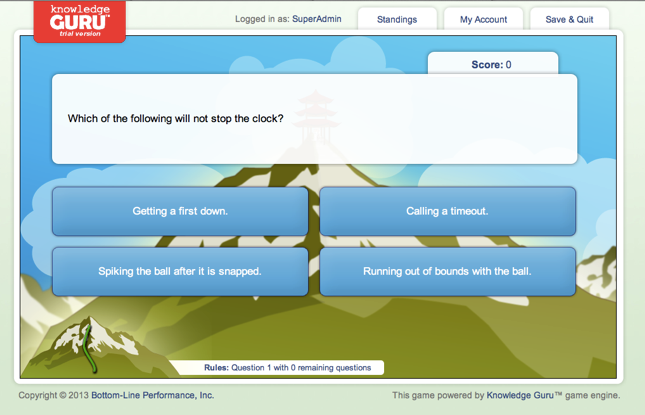
Making your distractors equivalent in length will avoid tipping players off to the correct response.
Do use True/False and Yes/No questions when needed
True or False may seem like a basic question type, but it works just fine as one of your three iterations in a question set. If you make the question or statement seem plausible either way, learners will still find the question challenging.

